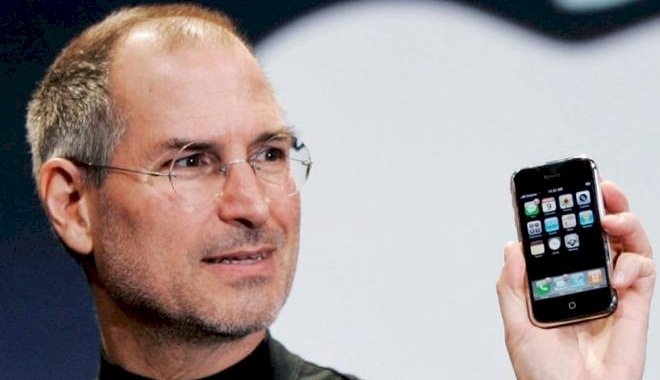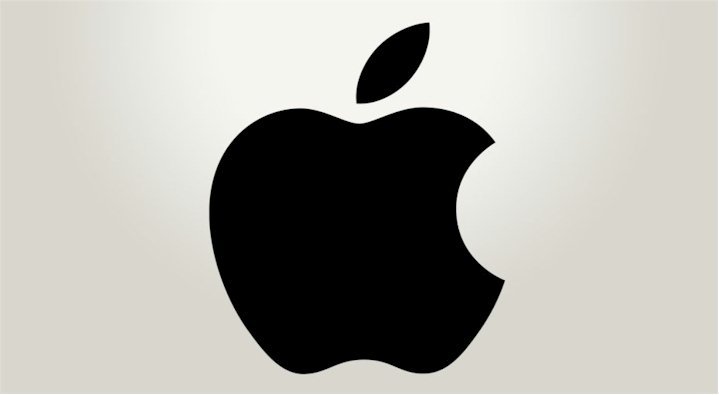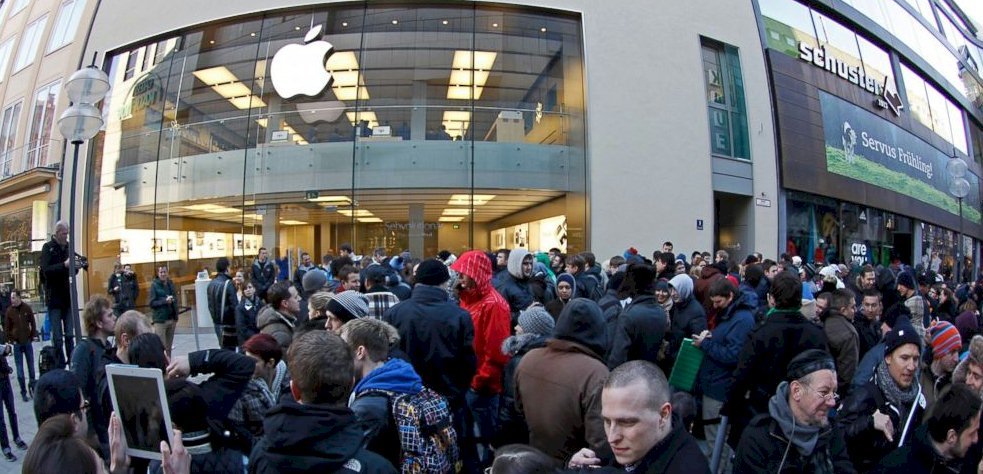This is a look at the Apple Logo & some history behind the business.
Let’s take a quick test. What comes to mind when you hear the word ‘Banana?’ And what comes to mind when you hear the word ‘Apple?’ Most likely, you just saw the Apple Logo in your head.
Though these two words are fruits, you will quickly associate the first word–Banana with fruit while having two distinctive images in mind concerning the second word–Apple, which could either mean the fruit or the company.
In this digital era, the word–Apple is more likely to be associated with the company than the fruit. You may wonder what accounted for this dilemma! Well, it’s the power of effective branding and communication.
While a college education remains and will continue to be the best choice for most youths, only a handful of children have the tenacity to trade it for their passions. One such kid was Steve Jobs, the soul, and the heart of Apple Inc. Welcome to the history class of Apple, the world’s first trillion-dollar company.
The History of Apple
Steve Jobs was born on February 24, 1955, to John Jandali and Joanne Carole Schieble in San Francisco, California. Paul and Clara Jobs adopted and raised him as their own. He dropped out of Reed College in Portland, Oregon, with the excuse of not wanting to waste his parents’ money on an education that seemed meaningless.
In 1974, Atari Corporation hired him as a Video Game Designer. He worked hard to save money for one of his adventures–a religious trip to India to experience Buddhism. Back in Silicon Valley, San Francisco, he met with his former high school mate, Steve Wozniak, who was working for Hewlett Packard Company and developing his logic board.
Steve Jobs took delight in his friend’s innovation, the Apple I, and together with Ronald Wayne, the three men co-founded Apple Computer Inc. in 1976 after Hewlett Packard officially rejected Wozniak’s design. Their first office was a garage at Jobs’ house.
Ronald Wayne, who hand-sketched the first Apple logo, left the company shortly before its registration. He took with him a cheque of $800, which could have earned him about $72 billion today.
 Apple I, the first product for the company, was a motherboard with only a processor and memory. Customers who buy it had to get their case, monitor, and keyboard. It sold for $666.66, a recurring figure that delights Steve Wozniak–fascinating!
Apple I, the first product for the company, was a motherboard with only a processor and memory. Customers who buy it had to get their case, monitor, and keyboard. It sold for $666.66, a recurring figure that delights Steve Wozniak–fascinating!
The primary reason Steve Jobs brought in Ronald Wayne was for him to handle the business side of the company. So, his departure compelled him to take charge of the business functions. He worked hard to persuade potential investors to invest in their personal computer, a product he envisioned will revolutionize the technology industry. Fortunately, he could get the attention of Mike Markkula, an Angel Investor, to contribute $250,000.
The funding and mentorship of Mike Markkula led to the official registration of the company in January 1977. Mike, holding one-third share of the company and working as the third employee, brought in Michael Scot to become the first Chief Executive Officer. He reasoned that Steve Jobs was too young to serve as CEO.
In the same year, Apple stormed the world with its second product, the Apple II, which comes with VisiCalc–the world’s first spreadsheet and calculating software. The software shot Apple ahead of the market leaders, Tandy, and Commodore. With VisiCalc, Apple became a force to reckon with in the technology industry and started selling to businesses.
The garage office gave way to an entirely new office in 1978 with the Apple II production line and many employees. Xerox PARC, in 1979, granted access to their campus to Apple engineers for three days with the condition to buy 100,000 shares of Apple for $10 per share.
In 1980, the company faced fierce competition from the likes of IBN and Microsoft. To compete effectively, Apple introduced the Apple III. Sadly, it failed to live up to expectations because of a design flaw.
Steve Jobs’s visit to Xerox PARC labs inspired him to start the development of a Graphic User Interface (GUI) for the company’s next computer, the Apple Lisa. Sadly enough, the board removed him from the Lisa team because of internal misunderstanding. So, he joined the other team that was working on the Macintosh project.
Apple laid the golden egg on December 12, 1980, when the company went public. The Initial Public Offering (IPO) generated $217 million for Steve Jobs and made 300 other millionaires. A report by EDN Network revealed that the company’s $4.6 million shares were sold out immediately and generated more capital than other Initial Public Offering (IPO) since the Ford Motor Company in 1956.

In 1983, the company released Apple Lisa into the market, but just like its predecessor, the Apple III, it failed to live up to expectations. This time not because of the design flaw, but its high price and limited support. The same year, when Mike Markkula was about to retire, Steve Jobs poached John Sculley from Pepsi to be the new Chief Executive Officer.
But the new CEO and Steve Jobs did not fit well in the same boat, so Steve Jobs executed his hidden motive. In 1985, Steve Jobs attempted to get rid of the new CEO, but his action backfired and the board side with John Sculley to remove him from his duties. He left to start another company called NeXT. His bosom friend, Steve Wozniak, also left the company around the same year.
Let’s leapfrog to the event that brought the Apple Emperor back to post. In 1993, the Apple Board fired John Sculley for an unsuccessful production line. Immediately, Michael Spindler took over, but he made the same mistakes as his predecessor. So, the board axed him from the position in 1996, and Gil Amelio took over as the new CEO.
Gil Amelio made a lot of changes, including reducing the workforce and cutting down expenses. Under his watch, the company’s stock continued to trend downwards. This unfortunate event compelled him to buy NeXT, Steve Jobs’s second company, for $429 million. This business deal brought Steve Jobs back to Apple in February 1997.
Five months into his reunion with the company, the board made him the interim CEO, and Gil Amelio resigned a week later. From this moment to his death in October 2011, he led a transformative team that built the Apple legacy that has become one of the world’s wonders.

His second spell at the company brought to the world some innovative products: iMac, iMovie, iPod, iDVD, iTunes, MacBook Pro, iPhone, and Apple Store. Though he’s gone, his legacy continues.
Apple’s Logo Evolution

In 1981, at a press conference, a journalist asked Steve Jobs why he chose the name Apple. He answered, ‘I love apples and like to eat them.’ With this revelation from the famous business icon, it’s no surprise he channeled all his energy and resources to ensure its success.
The Apple logo has undergone two significant designs, and minor color transitions over the four decades it has existed. Stay with me as I walk you through its logo evolution. Ronald Wayne designed the first logo in 1976.
The event that led Isaac Newton to discover the law of gravity inspired him. Thus, an apple falling on his head. This logo had an apple hanging above the head of Isaac Newton, and with an inscription that read, ‘Newton… A mind forever voyaging through strange seas of thought alone.’
In the same year, the company changed its logo. Steve Jobs wasn’t happy with it. He thought Newton’s version was complicated, outdated, and not representing the philosophy of the company. He wanted something simple, modern, and which blends the name and logo.
He got precisely the emblem he wanted after engaging the services of Job Janoff, a corporate logo designer from Regis McKenna, in 1977. He designed the iconic logo–the Bitten Apple, which today is one of the recognizable symbols in history. This version of the logo had the rainbow colors on it, and the company used it from 1977 to 1998.
Other versions are the translucent (1998), Monochrome (1998 – 2000), Aqua (2001 – 2007), and the chrome (Current).
Apple’s Logo Element of Design

Meaning, they say, is in people. The Apple logo is shrewd in mystery, and till the founders come to explain the intentions behind it, any explanation will remain guesswork.
Apple used the famous rainbow spectrum on its second, accepted, and renowned logo. A careful study shows the logo doesn’t follow the natural orders of the rainbow colors–red, orange, yellow, green, blue, indigo, and violet. This usual shift attests to the company’s vision to dare to be different, and that’s what it represents in the industry.
As noted earlier, Apple was the first company to bring a color display computer to the world, the Apple II. Some people think that to honor and celebrate this milestone in the company’s history, the company adopted the rainbow spectrum.
The shape of the logo is another wonder. Though it’s the apple fruit, the meaning is profound. To explain, some people have linked it to the Garden of Eden, where Adam and Eve took a bite of the forbidden fruit – a thirst for knowledge. Therefore, using Apple’s product will improve your experience and set you free from ignorance.
Also, there’s the bitten part of the logo. Here, there are two schools of thought. According to the designer, Rob Janoff, it should differentiate it from cherry tomato and other objects of a close resemblance.
But, Rob’s creative director, Mr. Chip, had a different opinion. To him, the bite stands for byte–a computer term that references the industry the company is. This statement is also a good fit, but not the position of the company.
‘One of the deep mysteries to me is our logo, the symbol of lust and knowledge, bitten into, all crossed with the colors of the rainbow in the wrong order. You couldn’t dream a more appropriate logo: lust, knowledge, hope, and anarchy.’
The above quote was the opinion of Jean-Louis Gassée, Apple’s former executive.
The Popularity of Apple’s Logo
 Mystery drives curiosity. The lesser people know about an object, the more they crave to find out more. Apple, from its inception, has used puzzles to attract loyal clients. Steve Jobs and his Co-founders have said little about their famous logo, leaving room for speculations.
Mystery drives curiosity. The lesser people know about an object, the more they crave to find out more. Apple, from its inception, has used puzzles to attract loyal clients. Steve Jobs and his Co-founders have said little about their famous logo, leaving room for speculations.
Today, Apple is the strongest brand in the world. The only company in the world to have achieved a market cap of $1.2 trillion. Interbrand, a brand consultancy firm, revealed. Thanks to their powerful logo, innovation, and marketing drive.
In 1984, Apple’s Superbowl Campaign took the world by storm. Many still regard it as the most successful Superbowl campaign that disrupted the tech industry and position Apple in the minds of people as a tech giant.
Another marketing drive that intensified their brand popularity was the ‘Think Different Campaign,’ in 1997. It won many hearts.
The Bitten Apple Logo is everywhere. It has become synonymous with style, luxury, wealth, reliability, innovation, and power. It has become highly recognizable that it represents the company without its name, Apple Inc.







